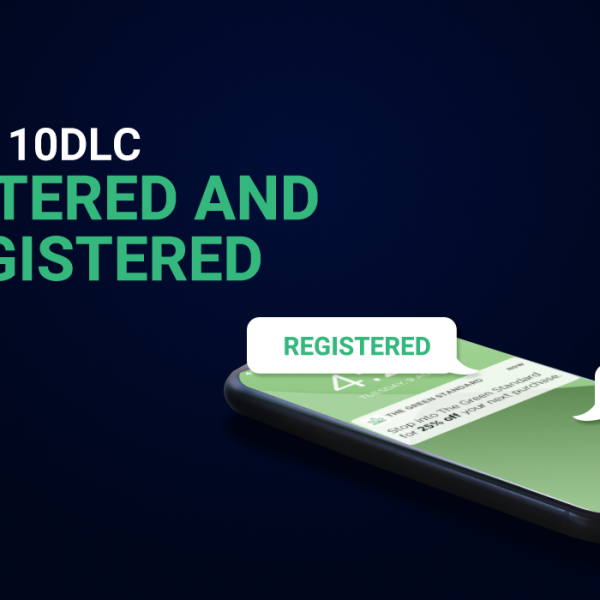SMS (Short Message Service) marketing is a great tool for retailers and brands when it comes to spreading the word about their products and services. However, there are certain rules and regulations that must be followed when using SMS marketing.
It’s important to stay up-to-date on the most current regulations from state to federal levels. If a violation occurs, it can result in costly fines.
We have previously discussed how messages are routed across the telecom system and what 10DLC and unregistered traffic are. More importantly, we’ve also discussed how these come into play in highly regulated markets and how retailers and brands can stay compliant.
In this article, we’ll talk about how messages get flagged and what can be done to ensure that your SMS campaigns are compliant with the latest regulations.
SMS/MMS Filtration: What Gets Flagged
Filtration refers to the process of allowing or blocking particular messages in order to protect users from unwanted content. Most telecom providers are stringent when it comes to filtering messages.
Generally speaking, telecom providers filter messages using three main methods:
- Image recognition
- Brand name recognition
- Keywords
Image recognition
This method is usually utilized for MMS (multimedia messaging service) messages. Telecoms use advanced bots to scan for any content that may be deemed inappropriate, such as certain symbols or words.
Brand name recognition
This method is used to identify messages that use the brand names or logos of companies that are not authorized to use telecom networks for messaging. It’s important to ensure that the brand name or logo of the company is not used in any SMS messages, as this can lead to a message being flagged.
Keywords
Many telecom providers use keyword-based filtering to block messages that contain words or phrases that could be deemed inappropriate. It must be noted, however, that there is no definite list of words or phrases that will get flagged, as this is determined by each individual telecom provider.
However, retailers and brands should still be aware of certain words.
Promotional content along with highly regulated related content could also be flagged, so it’s important to ensure that you are adhering to the regulations of each state in which your company operates.
Some promotional or “salesy” keywords you need to be aware of are “discounts”, “offers”, “freebies”, and other similar phrases.
IMPORTANT NOTE: As we previously mentioned, the filtration process is determined by each individual telecom provider. There is no cut-and-dry method to determine what images or keywords will get flagged, so it is important to remain aware of the latest regulations and keep your content up-to-date with them.
What Can You Do About This?
A good workaround for SMS/MMS filters is for retailers and brands to send a fairly neutral, non-promotional message, then include a link that’s directed to a website where promotional content can be found.
This allows retailers and brands to retain some of their creative freedom without running the risk of having their messages flagged by filters.
Link shorteners
It’s important to remember, however, this isn’t a bullet-proof workaround. You must still be careful with how you structure your links. A key thing to remember is NOT to use public link shorteners such as Linktree, as carrier bots cannot go through that link and your message will likely get flagged.
Instead, use a private link-shortening service such as those offered by SMS providers or marketing services dedicated to retailers and brands like Alpine IQ. These are more secure and efficient link-shortening services that make sure your message is compliant and won’t get flagged.
Domain and IP address health
Another essential aspect of sending links via SMS is the domain and IP address health. Carriers use a variety of signals to assess the health of a domain and IP address, such as hosting history, malicious software, and content quality.
If your domain or IP address is flagged as suspicious, carriers may decide to block the message. This is why it’s important to use a reliable and trusted hosting provider who will be able to provide a secure connection for your website.
Landing page metadata
The metadata on the landing page matters as well. Carriers will assess the information in your metadata such as title, description, and keywords to determine if the message is compliant with their terms and conditions.
For retailers and brands, the landing page should be clear and concise, with all the necessary information included.
The best thing retailers and brands can do is to make sure they are compliant with all regulations and guidelines set by telecom providers. This means that your content should be professional, informative, and up-to-date with the latest regulations.
It’s also important to keep in mind that the filtration process is highly variable and can change at any time. This means that retailers and brands need to remain aware of the regulations and adjust their content accordingly.
Wrapping It Up
Highly regulated markets walk a fine line when it comes to marketing, especially with SMS where there are extra regulations.
The key is to remain compliant, so it’s important to be aware of the latest regulations and adjust your content accordingly. Additionally, it’s also helpful to use a platform like Alpine IQ. Our suite of tools make sure that your messages get delivered and that they are compliant with all telecom provider regulations.
If you want to learn more about SMS marketing, you can check out our webinar: Alpine IQ’s Deep Dive: Everything you need to know about text message filtration.
You can also visit https://alpineiq.com/ to learn more about how we can help you with your SMS marketing.
To get the latest updates on our suite of services, make sure to subscribe to our blog today!







Leave a Comment